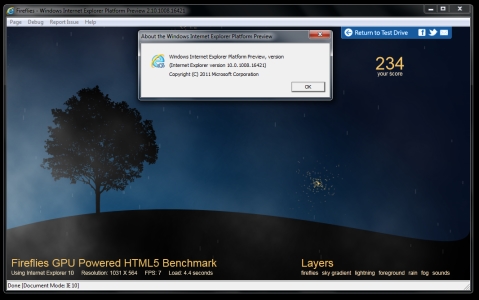Work in progress
Microsoft looks to be following the example of Google and Mozilla, working to a more rapid release cycle for its browser with the latest version. Internet Explorer 9 is barely hatched in traditional Microsoft terms, and already Preview 2 of IE 10 is available to download, showing off support for even more HTML5 features, as well as a few tricks of its own.
The primary additions to Preview 2 of IE 10 are support for HTML5's web workers and, drag and drop, and the File API. Web workers enable background offloading of javascript, letting scripts run in a separate process to the browser not only improving their performance, but also ensuring that slow scripts don't slow down the browser. Drag and drop uses the HTML5 canvas to allow page elements to be moved around - as the name suggests. Combined with the FileAPI, this makes it possible to drag files from the desktop into a web page. This latter ability is already offered by Chrome, for example, in Gmail so it's good to see IE catching up.
To show off the new version of the browser, Microsoft has posted a number of demos on its IE test drive website. A lot of these work in other browsers as well, so it's possible to benchmark them against each other, but as no two browsers have quite the same HTML5 support there are a few tests that are IE only for now - that's not likely to stay true for too long, though, as other browsers are extending their HTML5 support constantly.
One test that Internet Explorer has a big lead on is called Fireflies, and makes use of Internet Explorer's hardware acceleration. Although Chrome also supports GPU-decoding of web graphics, Microsoft claims its tight integration between IE and Windows 7 gives is a significant performance advantage - and the results do seem to bear that assertion out.
Internet Explorer 10 won't be launched fully for a while yet, as new features, performance tweaks, and bug fixes are still being worked on - a delay many developers and users will be happy to suffer if it ensures an embracing of open standards, such as HTML5 and CSS3, in favour of proprietary enhancements in this next release of Microsoft's browser.
Microsoft has also updated its email service, Hotmail, improving performance by up to 10x in many areas. The full details are available in a blog post, but the gist of the changes include better caching of content, making toggling between areas faster, and aggressive pre-loading, putting messages from the server before they are opened. The update has already been enabled for most of Hotmail's users, with the exception of pre-loading which is not available in some regions.














